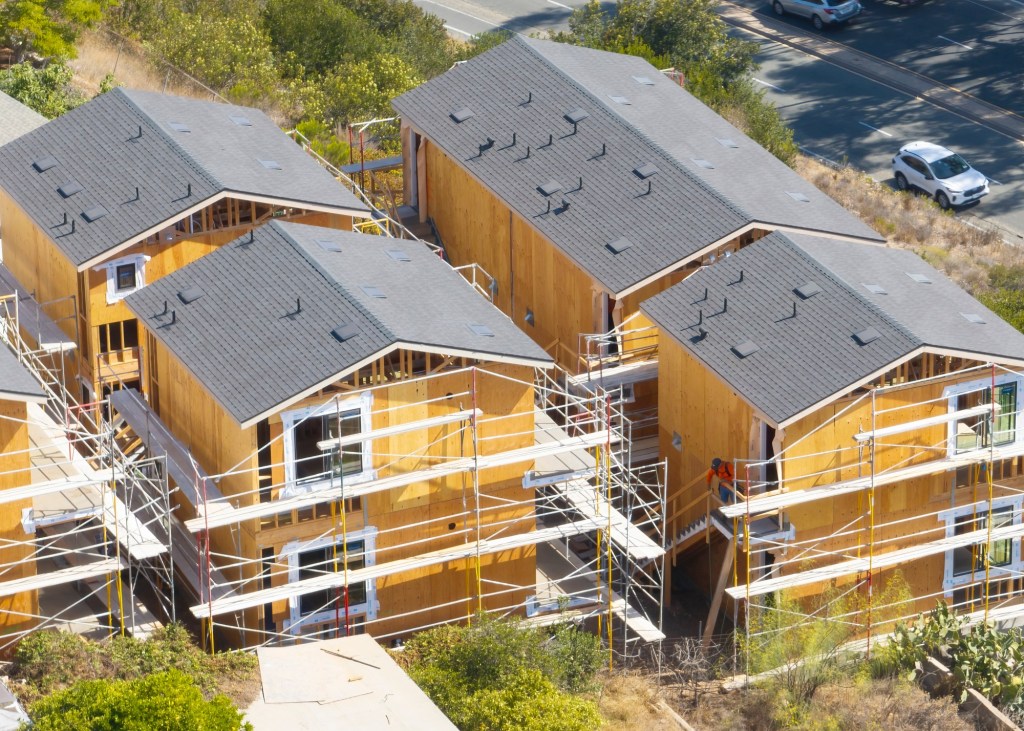San Diego leaders on Tuesday finalized a new city cap on the number of backyard apartments on single-family lots — but officials said several large proposed projects already in the approval pipeline will be hard to block.
The new cap is a long-awaited response to many months of neighborhood complaints that outlier backyard apartment projects with dozens of units are damaging community character and creating other problems.
Leading critics of the projects hailed Tuesday’s vote as a milestone in the fight to rein in San Diego’s unusually aggressive incentive for backyard apartments, which are formally called accessory dwelling units, or ADUs.
“Adopting these amendments, including well-defined caps on the number of ADUs and restricting development on steep hillsides and in high fire-hazard zones, makes today a significant step forward,” said Talmadge resident Geoff Hueter, leader of Neighbors for a Better San Diego, which often opposes development in single-family neighborhoods.
The sweeping rollback was approved 5-4 by the City Council last month and finalized Tuesday in a 5-1 vote. Three opponents at last month’s meeting were absent from Tuesday’s vote: Sean Elo-Rivera, Stephen Whitburn and Kent Lee.
In addition to the cap, the rollback forces developers to pay infrastructure fees, mandates parking spaces for ADUs that aren’t near transit and requires ADUs to be built farther away from property lines.
Other changes will limit ADUs to two stories, prohibit them on cul-de-sacs in areas with high wildfire risk, set a maximum size of 1,200 square feet and allow the homes to be sold, not just rented.
Councilmember Marni von Wilpert praised the rollback and the cap Tuesday but expressed concerns that it won’t let the city block some proposed projects that would include more than 100 ADUs each.
“Can we prevent 120, 140 ADUs from going onto a lot?” von Wilpert asked.
Deputy City Attorney Lauren Hendrickson said that it would be a major challenge for the city to block those projects if their development applications are complete.
“The ordinance before you does not include a retroactive provision,” said Hendrickson, citing state law. “Development applications deemed complete for housing and subdivision development are entitled to process under the laws and policies in effect at the time an application was deemed complete.”
While there are some exceptions, Hendrickson said those exceptions are not easy to use.
“They are very limited and narrowly tailored,” she said. “There has to be a specific adverse impact, which means a significant and quantifiable direct and unavoidable impact based on objective, identified, written public health or state standards, policies or conditions.”
Von Wilpert suggested a possible strategy could be declaring that proposed large-scale ADU developments are fire safety hazards because they have limited evacuation routes.
Hendrickson said that would be difficult but agreed to review any projects on a case-by-case basis.
The new cap reins in a city ADU incentive that had gone beyond what state law allows by letting property owners build a potentially unlimited number of such units, provided a property was near transit and in an area with good jobs and other resources.
For every ADU a property owner has been willing to build that is deed-restricted for low- or moderate-income tenants, they have been able to build one bonus ADU and charge market-rate rent for it.
While in most cases this has led to property owners building between one and three ADUs, in some unusual cases property owners have used the program to build more than a dozen on a single lot.
To prevent that, the rules finalized Tuesday set a maximum of four ADUs on lots smaller than 8,000 square feet, five ADUs on lots of 8,001 to 10,000 square feet and six ADUs on lots larger than 10,000 square feet.
Councilmember Raul Campillo praised the cap but noted that he wanted a tighter one that would have set a limit of three ADUs per property.
“I had hoped for more — I voted for more,” Campillo said. “It is nonetheless a good step forward.”
Hueter, the neighborhood group leader from Talmadge, said his group’s next goal is getting the city to adopt ADU design standards that would make the units more architecturally compatible with their surrounding homes.
Other residents harshly criticized the council Tuesday, saying they hadn’t reined in the ADU incentive quickly enough.
Scott Chipman, a Pacific Beach resident, said the incentive caused the formation of more than two dozen grassroots opposition groups that finally got the council to act.
“What you have done slowly and poorly has allowed projects that will do major community damage to get in the pipeline that are going to be difficult or impossible to block,” Chipman said.
Becca Batista of Encanto predicted the cap wouldn’t end up addressing critics’ concerns.
“The cap on the bonus ADU program is a tiny step in the right direction, but it’s not enough,” she said. “This cap will only increase and spread out the number of homes being swept up by developers that will never be available for first-time homebuyers and young families.”
Originally Published: July 22, 2025 at 5:39 PM PDT
